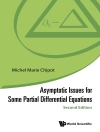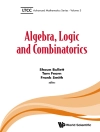The contributions in this book explore various contexts in which the derived category of coherent sheaves on a variety determines some of its arithmetic. This setting provides new geometric tools for interpreting elements of the Brauer group. With a view towards future arithmetic applications, the book extends a number of powerful tools for analyzing rational points on elliptic curves, e.g., isogenies among curves, torsion points, modular curves, and the resulting descent techniques, as well as higher-dimensional varieties like K3 surfaces. Inspired by the rapid recent advances in our understanding of K3 surfaces, the book is intended to foster cross-pollination between the fields of complex algebraic geometry and number theory.
Contributors:
· Nicolas Addington
· Benjamin Antieau
· Kenneth Ascher
· Asher Auel
· Fedor Bogomolov
· Jean-Louis Colliot-Thélène
· Krishna Dasaratha
· Brendan Hassett
· Colin Ingalls
· Martí Lahoz
· Emanuele Macrì
· Kelly Mc Kinnie
· Andrew Obus
· Ekin Ozman
· Raman Parimala
· Alexander Perry
· Alena Pirutka
· Justin Sawon
· Alexei N. Skorobogatov
· Paolo Stellari
· Sho Tanimoto
· Hugh Thomas
· Yuri Tschinkel
· Anthony Várilly-Alvarado
· Bianca Viray
· Rong Zhou
Innehållsförteckning
The Brauer group is not a derived invariant.- Twisted derived equivalences for affine schemes.- Rational points on twisted K3 surfaces and derived equivalences.- Universal unramified cohomology of cubic fourfolds containing a plane.- Universal spaces for unramified Galois cohomology.- Rational points on K3 surfaces and derived equivalence.- Unramified Brauer classes on cyclic covers of the projective plane.- Arithmetically Cohen-Macaulay bundles on cubic fourfolds containing a plane.- Brauer groups on K3 surfaces and arithmetic applications.- On a local-global principle for H3 of function fields of surfaces over a finite field.- Cohomology and the Brauer group of double covers.












